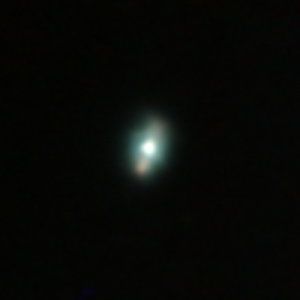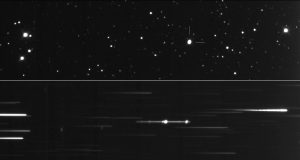2022 December 5
Deep Sky Update – November 2022

Here on Orkney, November has been an excellent month for aurorae, so I’ve not had much of a chance to do much deep sky observing. However, I did get my updated 12″ Dark Star dob up and running, and tried it out on a few easy old favourites. However it’s collimation leaves much to be desired, so I need to do some work on that.
Section Meeting March 19 2023
Preparations for the section meeting are well advanced now, and I hope to have all the details confirmed before Christmas. I will send a note when ready.
November’s Object of Interest
IC 2149 gathered much interest, though it was rather small for imagers. Many thanks to all who had a go at it; Richard Sargent, Alan Thomas, Mattia Piccoli, Mike Harlow, Iain Cartwright. Mattia Piccoli managed a high resolution image using a 2X Barlow.
And Mike Harlow nicely presented a low dispersion spectrum of the PN accompanying an image of the nebula.

Jim Latham sent the following visual report:
“The skies finally cleared this week allowing a look at IC 2149 on 20 November, c. 22:00 UT, with the 14″. This is a small but bright planetary and easily found. It could be picked out for the surrounding stars at x53 due to its obvious blue colour, but really only showed a disc at x178 and above. At high magnification – x340 and x680 (with barlow) – it was a fuzzy oval, aligned roughly east-west, with a hint of a central, patchy brighter ‘bar’ along its length. The central star was very obvious, and appeared quite blue-white to my eyes.”
Richard Sargent also had a go at the Westbrook Nebula, but although detected was rather too small. I made some observations using iTelescope but the image scale there was too small too see much beyond a few pixel wide smudge.
Object of Interest for December
For December, I thought I would choose a nice Christmas bauble, and one that does not appear in the image library at the moment. It is the open cluster NGC 2194 and it lies close to the ‘right hand’ of Orion (depending on your constellation art). Being comparatively bright (mag. 8.5) and compact (10 arc-minutes) it should be an easy target for both visual observers and imagers. It would be interesting to see if images can show ‘blue straggler’ stars – these are blue stars which are part of the cluster but are surprising because blue stars which were created at the time of formation of the cluster will have evolved away by this point. Blue stragglers are thought to have been created by collisions. If you check the location on Stellarium beware – it’s marked (on my version at least) as the “intergalactic wanderer”, but this is clearly a typo error in the database – the globular cluster NGC 2419 is the “intergalactic wanderer”.
I hope over the festive period you might get some clear skies, and a chance to do some observing. And look out for the next update in the new year.
Have a very merry Christmas.
Callum
| The British Astronomical Association supports amateur astronomers around the UK and the rest of the world. Find out more about the BAA or join us. |
